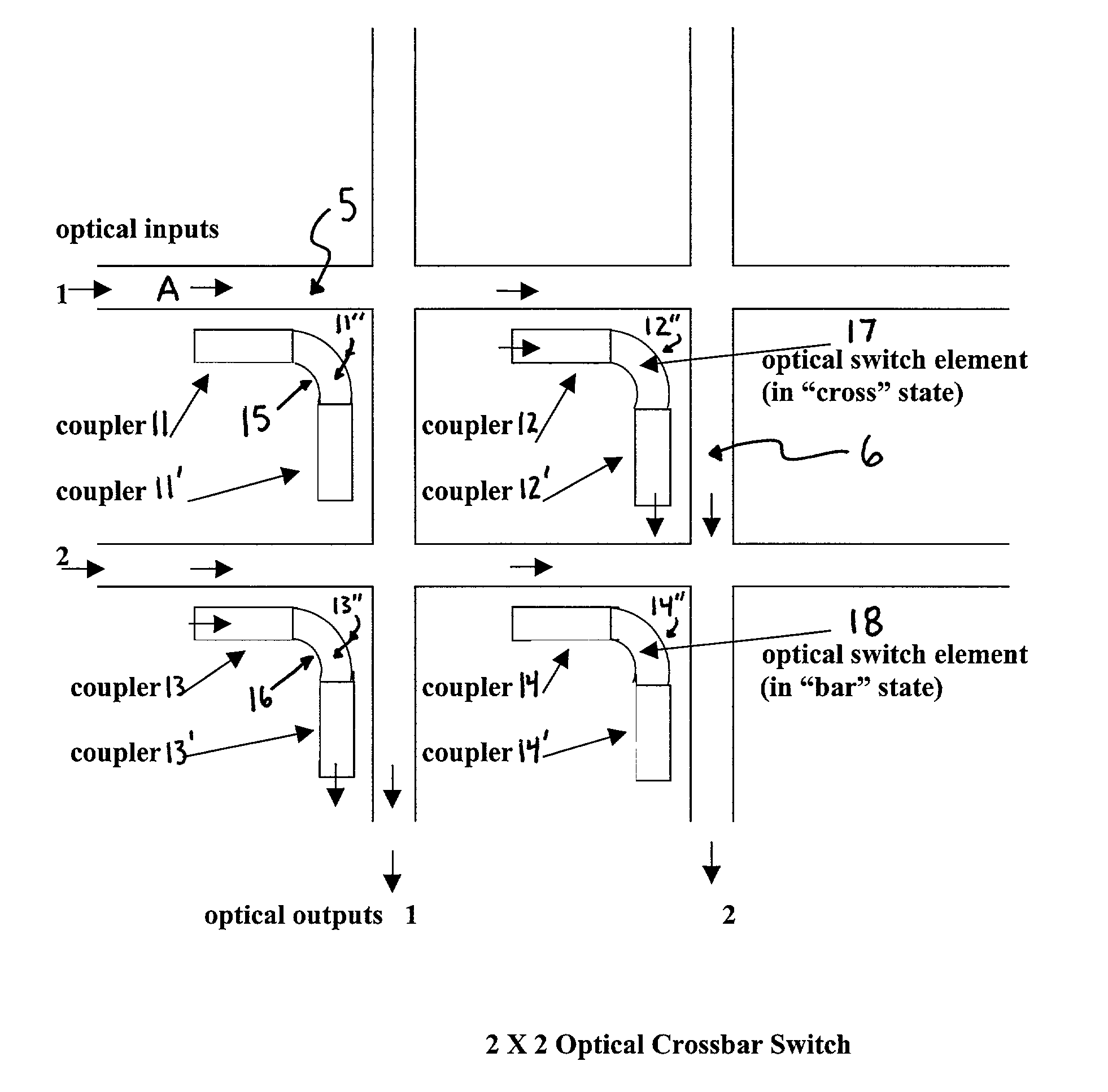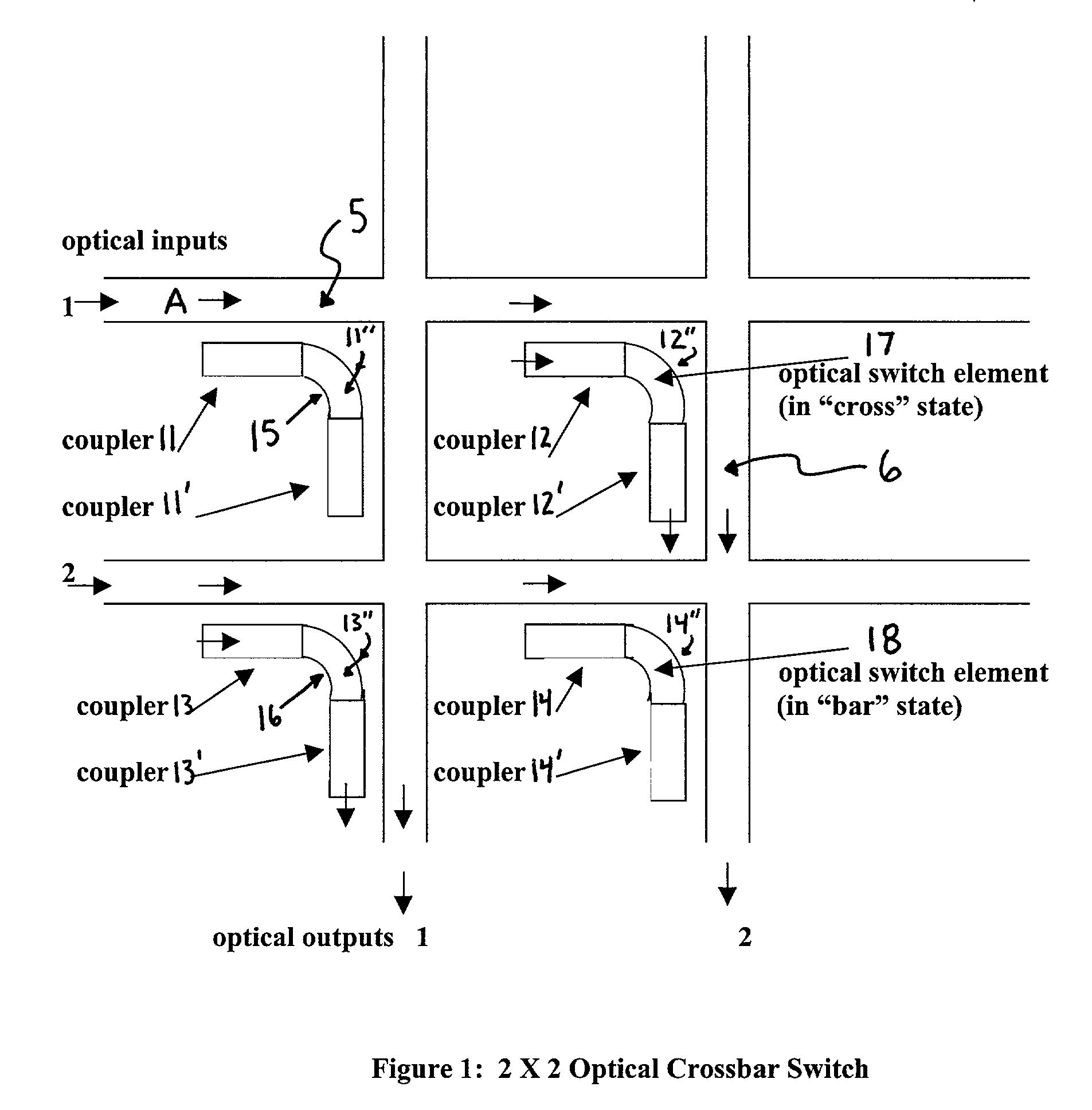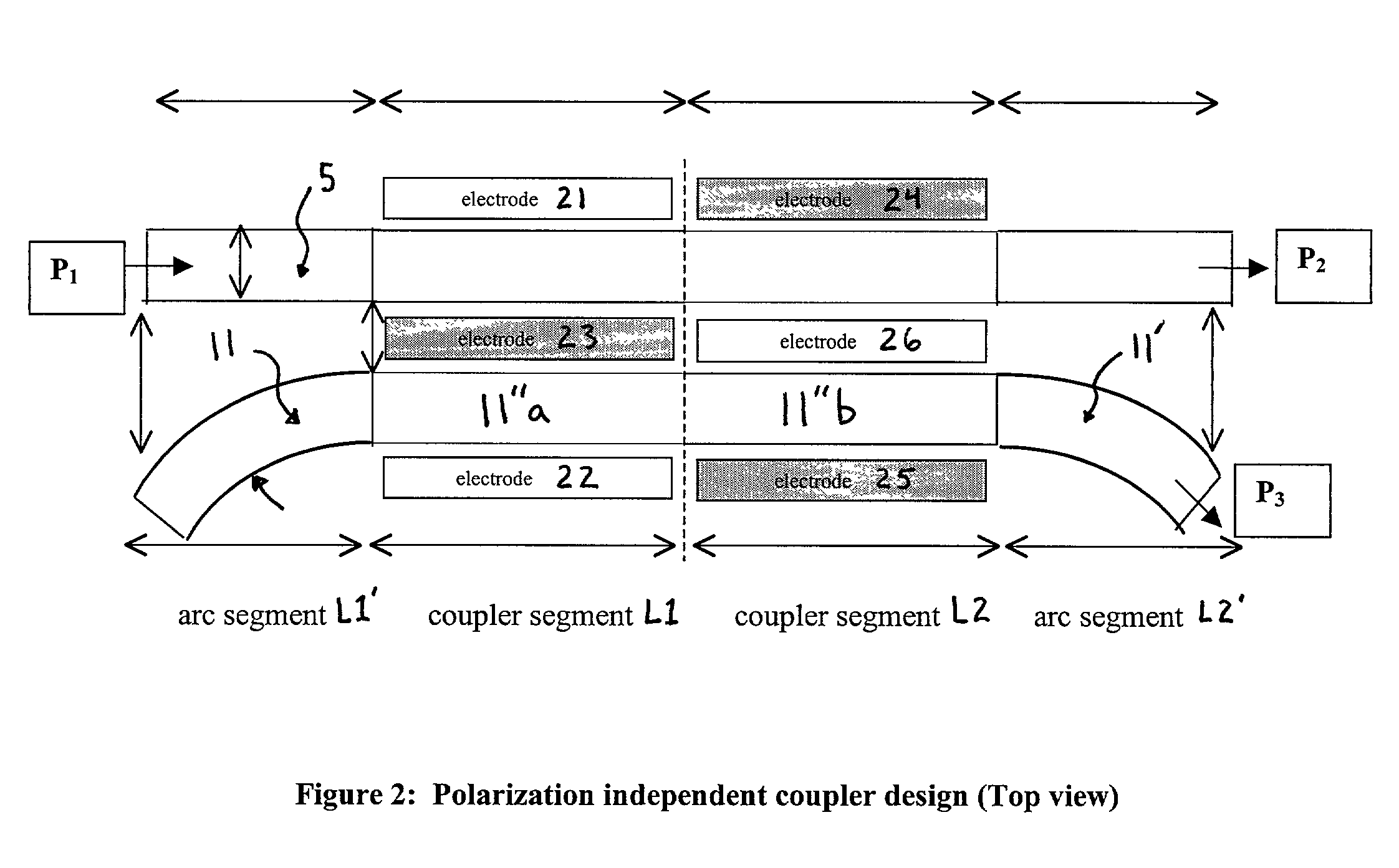Integrated optical crossbar switch
a crossbar switch and optical crossbar technology, applied in optics, instruments, electrical equipment, etc., can solve the problems of small grain size, unpredictability of values, and transient unbalance of optical couplers along the affected row or column
- Summary
- Abstract
- Description
- Claims
- Application Information
AI Technical Summary
Benefits of technology
Problems solved by technology
Method used
Image
Examples
Embodiment Construction
[0026] 1. Introduction
[0027] An integrated N.times.M optical crossbar switch according to the present invention preferably uses a polycrystalline ferroelectric thin film deposited on a silicon substrate. The switch can find many applications in reconfiguring optical communications systems where optical signals on optical fibers entering the switch input are directed to other optical fibers exiting the switch output. The ferroelectric material preferably is a member of the PLZT family, involving lead, lanthanum, zirconium, and oxygen, and thus has a very large electro-optical coefficient on the order of 100-400 pm / volt, both in thin film form and in bulk form. The substrate silicon provides the switching and latching function to address and maintain voltages at the selected crossbar elements. This approach results in a solid state, non-blocking optical switch with low insertion loss, low crosstalk, and polarization independence, addressable by N+M external control lines. Because of t...
PUM
| Property | Measurement | Unit |
|---|---|---|
| angles | aaaaa | aaaaa |
| size | aaaaa | aaaaa |
| size | aaaaa | aaaaa |
Abstract
Description
Claims
Application Information
 Login to View More
Login to View More - R&D
- Intellectual Property
- Life Sciences
- Materials
- Tech Scout
- Unparalleled Data Quality
- Higher Quality Content
- 60% Fewer Hallucinations
Browse by: Latest US Patents, China's latest patents, Technical Efficacy Thesaurus, Application Domain, Technology Topic, Popular Technical Reports.
© 2025 PatSnap. All rights reserved.Legal|Privacy policy|Modern Slavery Act Transparency Statement|Sitemap|About US| Contact US: help@patsnap.com



